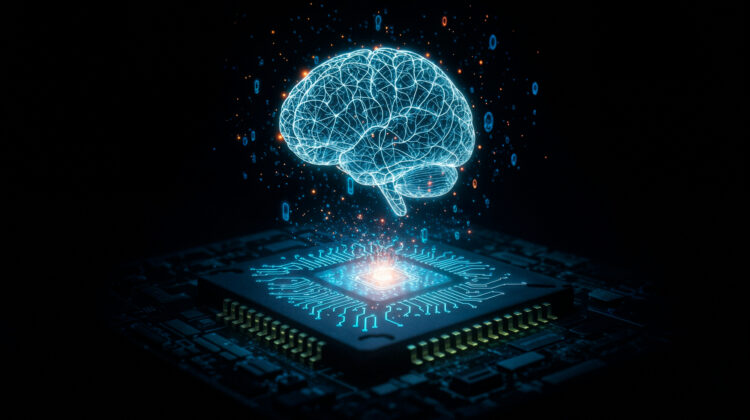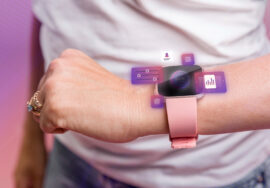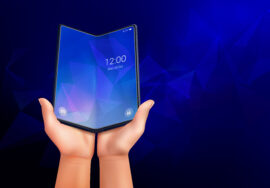
How Neuromorphic Chips Are Revolutionizing the Next Wave of Wearables and Smart Devices
Introduction: The Brain Inside Your Devices
As wearables and smart devices become more integral to our daily lives, the demand for faster, more energy-efficient, and more adaptive processing has never been greater. Traditional processors excel at calculations but struggle with real-time decision-making and low-power intelligence. Enter neuromorphic chips—processors designed to mimic the structure and function of the human brain. This breakthrough could reshape the future of Electronics & Gadgets, making devices smarter, faster, and far more intuitive.
What Are Neuromorphic Chips?
Neuromorphic chips are processors that replicate how neurons and synapses in the brain process and transmit information. Instead of operating like traditional CPUs and GPUs that follow strict sequential steps, neuromorphic hardware uses parallel, event-driven architectures.
Key characteristics include:
- Spiking Neural Networks (SNNs): Modeled after the brain’s firing neurons, allowing event-based data processing.
- Low Power Consumption: Designed for efficiency, enabling longer battery life for wearables.
- On-Device Learning: Chips can adapt and learn without needing cloud connectivity.
- Real-Time Processing: Capable of handling complex tasks such as vision, speech, and sensor data instantly.
This makes neuromorphic chips ideal for small, portable devices that need intelligence without draining power.
Why Neuromorphic Technology Matters for Wearables
Wearables—from smartwatches to fitness bands—are limited by battery life and processing constraints. Users want health tracking, AI assistants, and connectivity without charging their device every few hours. Neuromorphic chips address this by offering:
- Extended Battery Life: Reduced energy demands allow days or even weeks of continuous use.
- Smarter Health Tracking: Real-time analysis of biometrics like heart rate, oxygen saturation, and movement.
- Context Awareness: Chips adapt to user routines, recognizing patterns and anomalies in activity or health.
- Enhanced Privacy: Local processing minimizes reliance on cloud servers, protecting sensitive health data.
These advances mean wearables will shift from passive tracking devices to proactive health companions.
Smart Devices Beyond Wearables: Everyday Intelligence
The potential of neuromorphic chips extends far beyond wrist-based gadgets. In the broader world of Electronics & Gadgets, neuromorphic hardware is being applied to:
- Smart Earbuds: Real-time noise cancellation and adaptive sound profiles tuned to individual hearing.
- AR/VR Headsets: Ultra-low latency environments for immersive gaming and training simulations.
- Home Devices: Smarter assistants that understand context, emotion, and household patterns.
- Healthcare Tech: Medical monitoring devices that provide predictive insights without overwhelming data transfers.
By embedding brain-like intelligence, neuromorphic chips make smart devices more responsive, human-like, and practical.
Neuromorphic vs. Traditional Chips: A Comparison
To understand the leap forward, it’s helpful to compare neuromorphic chips to traditional processing units.
- CPUs: Great at sequential tasks but power-hungry and limited in parallelism.
- GPUs: Excellent for parallel processing but often too large and energy-intensive for wearables.
- Neuromorphic Chips: Small, efficient, and event-driven, designed for AI tasks directly on the device.
In short, neuromorphic technology allows devices to process data “as it happens” instead of relying on heavy cloud computing or draining batteries.
Real-World Applications Already in Motion
Several companies and research labs are pushing neuromorphic chips from theory into practical use.
- Intel’s Loihi Chip: A leading neuromorphic research chip that demonstrates brain-inspired learning for robotics and wearables.
- IBM’s TrueNorth: Designed with a million neurons, showing how scalable brain-like processors can be.
- SynSense and BrainChip: Startups creating commercial-grade neuromorphic solutions for wearable and IoT markets.
These pioneers are shaping a marketplace where neuromorphic-enabled devices become accessible to consumers.
The Impact on AI-Powered Wearables
AI has already transformed wearables with features like predictive fitness tracking and smart notifications. Neuromorphic chips take this further by allowing:
- On-Device AI Assistants: Faster, offline, and more secure interactions.
- Real-Time Anomaly Detection: Identifying irregular heartbeats, oxygen dips, or motion issues instantly.
- Personalized Health Coaching: Adaptive recommendations based on continuous pattern recognition.
- Immersive Experiences: For AR glasses and VR headsets, neuromorphic chips ensure seamless real-time interaction.
This evolution positions wearables not just as accessories but as integral tools for personal health and productivity.
Challenges in Adoption
While promising, neuromorphic technology still faces challenges before widespread adoption:
- High Development Costs: Creating chips with brain-like structures is resource-intensive.
- Software Ecosystem: Tools for neuromorphic programming are still limited.
- Integration Barriers: Many existing devices are designed for traditional chip architectures.
- Consumer Awareness: Average buyers may not yet understand the value of brain-inspired processing.
Despite these hurdles, momentum is growing, and adoption will likely accelerate as tech giants invest heavily.
The Future: A New Era of Electronics & Gadgets
Looking ahead, neuromorphic chips will redefine the balance between intelligence and efficiency. Imagine:
- Smartwatches that monitor stress and recommend mindfulness before burnout sets in.
- AR glasses that interpret and overlay real-world data in milliseconds.
- Earbuds that translate languages on the fly without cloud lag.
- Home assistants that truly “understand” conversations rather than responding with scripted outputs.
This represents a new era where Electronics & Gadgets act as proactive partners in daily life rather than reactive tools.
Conclusion: Smarter Devices, Healthier Lives
Neuromorphic chips bring us closer to embedding human-like intelligence into the devices we wear and use every day. For wearables, it means longer battery life, better health insights, and more meaningful user interaction. For the broader Electronics & Gadgets industry, it’s a leap toward smart devices that think, adapt, and evolve with us.
As this technology matures, consumers will experience smarter, more intuitive, and more personal devices than ever before. Neuromorphic chips are not just the future of processing—they are the foundation of the next generation of connected living.







